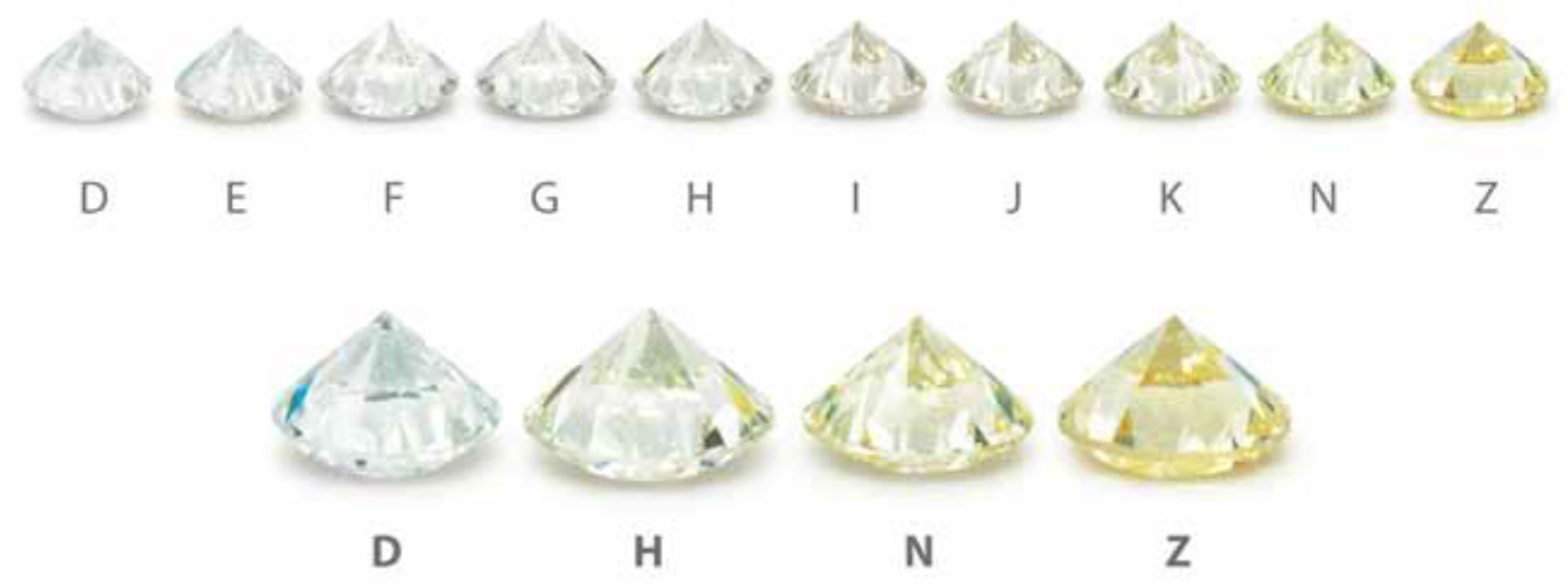No products in the cart.
Unveiling the Mysteries of the Diamond Color Scale
Introduction
Welcome to our comprehensive guide on the Diamond Color Scale. Diamonds are timeless symbols of love, elegance, and luxury. However, understanding their quality can be complex, especially when it comes to their color. In this article, we delve deep into the nuances of diamond color grading, shedding light on the intricacies that define the beauty and value of these exquisite gemstones.
What is the Diamond Color Scale?
The Diamond Color Scale is a standardized system used to grade the color of diamonds. Ranging from D (colorless) to Z (light yellow or brown), each letter represents a specific shade within the spectrum. This scale is crucial in determining the rarity and value of a diamond, as even the slightest variation in color can have a significant impact on its overall appearance and price.
Understanding Color Grades
Colorless Diamonds (D-F)
At the top of the scale are D-graded diamonds, which are completely colorless and exceptionally rare. These diamonds exhibit a stunning brilliance and are highly coveted for their purity. Following closely are E and F grades, which also fall within the colorless category and possess remarkable clarity and brilliance.
Near Colorless Diamonds (G-J)
Moving down the scale, we encounter near colorless diamonds graded G to J. While they may contain subtle hints of color, these diamonds still appear predominantly clear to the naked eye. They offer excellent value for those seeking beauty and quality without the premium price tag associated with colorless diamonds.
Faint to Light Yellow Diamonds (K-M)
In the next range, diamonds graded K to M exhibit faint to light yellow hues. While these colors are more noticeable, they can still appear relatively white when set in jewelry. Diamonds in this category provide an affordable option for those on a budget, without compromising too much on appearance.
Very Light to Light Yellow Diamonds (N-Z)
Towards the lower end of the scale, diamonds graded N to Z display very light to light yellow or brown tones. While these diamonds may offer value in terms of price, they tend to have more noticeable coloration, which can detract from their overall beauty and sparkle.
Factors Affecting Diamond Color
Several factors influence the color of a diamond, including:
- Natural Elements: Traces of nitrogen or other elements present during the diamond’s formation can affect its color.
- Treatment: Some diamonds undergo treatments to enhance or alter their color artificially.
- Cut Quality: The cut of a diamond can influence how light interacts with it, affecting its perceived color.
- Environmental Factors: Lighting conditions and the surroundings can influence how the color of a diamond is perceived.
Choosing the Right Diamond Color
When selecting a diamond, it’s essential to consider your preferences, budget, and the intended setting for the stone. While colorless diamonds are prized for their purity, near colorless and faint yellow diamonds offer excellent value without sacrificing beauty. Type iia diamond are exceptionally rare and prized for their unparalleled purity, brilliance, and lack of nitrogen impurities, making them the epitome of luxury and elegance in the world of diamonds.
Conclusion
The Diamond Color Scale serves as a vital tool in assessing the quality and value of diamonds. By understanding the nuances of diamond color grading, you can make an informed decision when selecting the perfect diamond for your needs. Whether you prioritize purity, brilliance, or value, there’s a diamond color grade that’s just right for you.


 WhatsApp Us 24/7
WhatsApp Us 24/7